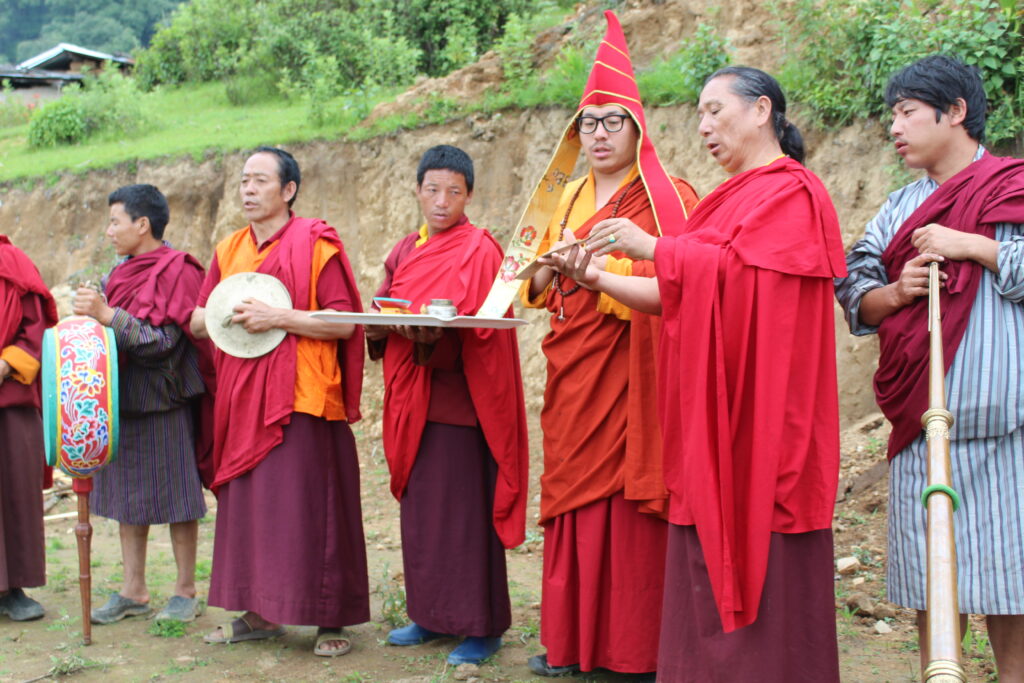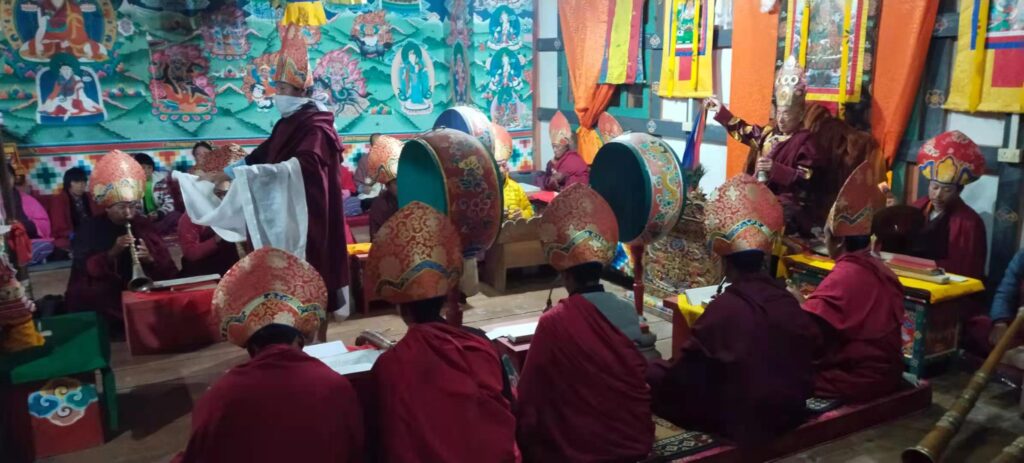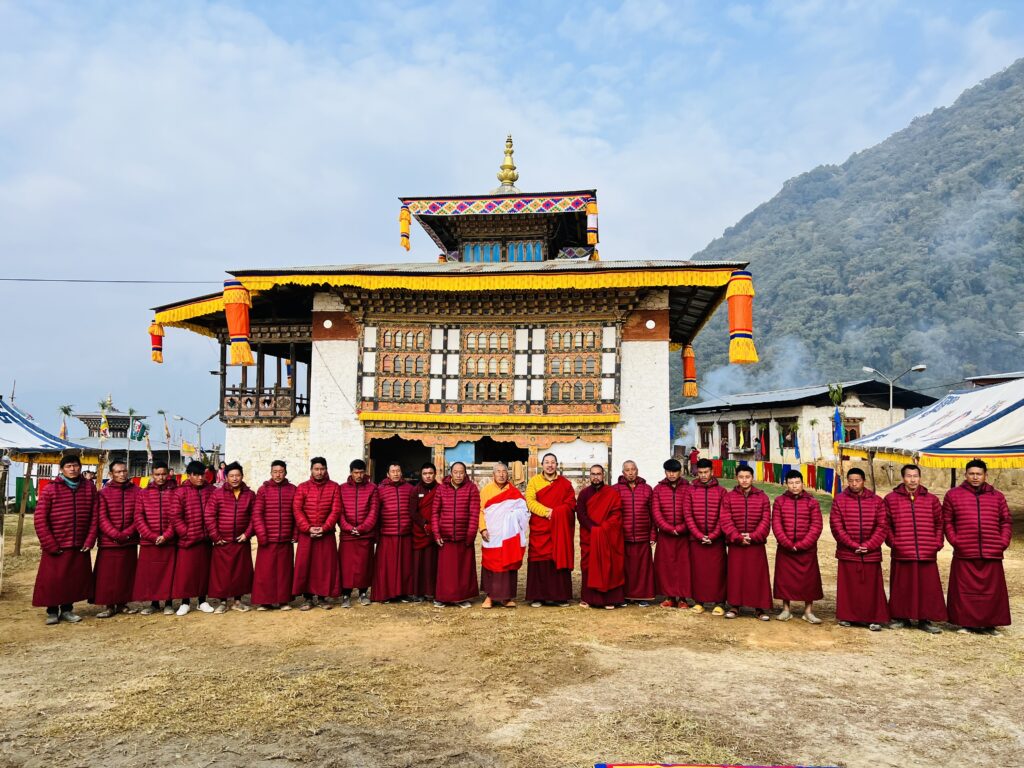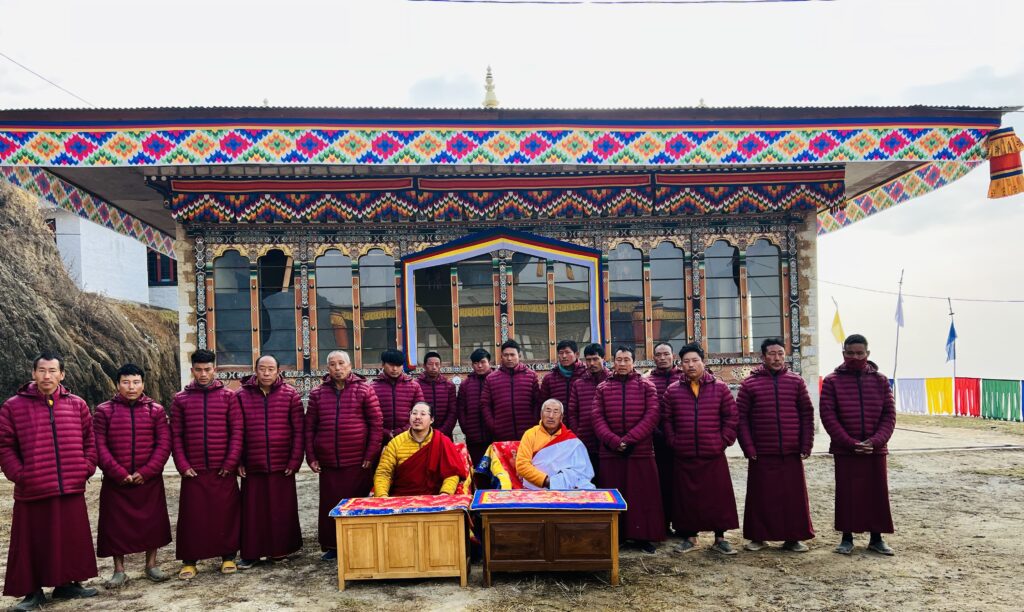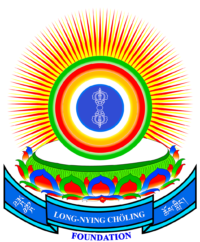Lay Monks or Gomchens of the Monastery
Gomchens, literally meaning “great meditators,” are a distinct group of lay priests in Bhutan, akin to Ngagpas or tantric practitioners in regions such as Tibet. Unlike ordained monks and nuns who live celibate lives, Gomchens are permitted to marry, have families, and live within the lay community. This allows them to serve as spiritual supports for their communities while integrating their religious practices with secular life.
Many Gomchens may engage in secular occupations such as farming or carpentry, but they have undergone extensive religious training, including various tantric rituals and sacred dances, and have completed numerous retreat practices. They perform ceremonies for devotees in their communities. Gomchens are easily identifiable by their distinctive attire: a red gho or damjug, which is slightly longer than that worn by other laymen. Those who have completed advanced practices often keep long hair and wear red or variegated color scarves.
Gomchens who complete a three-year retreat are referred to as Tsampas (retreatants). Those who have completed extensive long-term retreats, often spanning decades, and who possess deep realization are also referred to as yogis or Neljorpas.
The tradition of Gomchens in Bhutan dates back to the 8th century when Guru Rinpoche introduced Vajrayana Buddhism to the region. Guru Rinpoche is considered the first and greatest Gomchen in Bhutan and across the Himalayas, setting a precedent for all subsequent yogis.
For centuries, Gomchens in Bhutan have played a crucial role in promoting and maintaining the spiritual well-being of their communities. They serve the public in spiritual matters from birth and sickness to death ceremonies, acting as essential spiritual guides and supports.
Since the founding of the monastery, lay monks have served under the chief abbot, all of whom were yogis. During the reign of His Majesty the Third Druk Gyalpo (King) Jigme Dorje Wangchuk, Bhutan’s first Home Minister, Lyonpo Tamzhing Jagar, appointed in 1968, issued certificates to Gomchens under all the monasteries. These Gomchens were exempted from compulsory state service, allowing them to focus solely on spiritual matters within their communities.
From the 1960s to the present day, the number of Gomchens has fluctuated, with around 70 historically, and currently approximately 30 active Gomchens, including new members. Among them, they take turns to serve as Dorji Lopon (Vajra Regent or master), Umze (chant leader), Kudrung (disciplinarian), Champon (mask dance leader), and various ritual instrument players and torma making activities.
